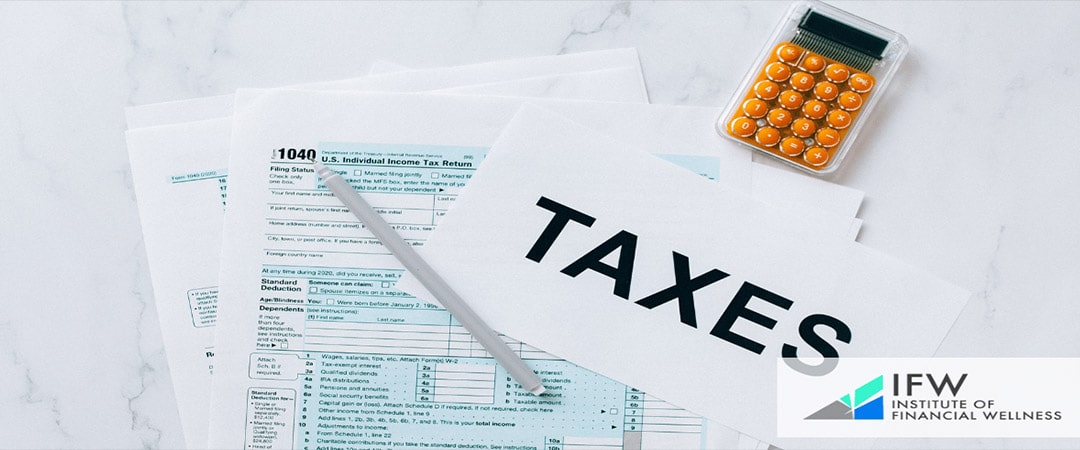“Wealth is the ability to fully experience life.” -Henry David Thoreau
If you’re beginning to think about retirement, then you may already be wondering what your retirement income needs will be. As we teach on our Retirement Score Webinar, knowing in advance how you can maintain your lifestyle and retire comfortably equals taking control of your future.
Determining the income required for an enjoyable retirement is crucial to ensure peace of mind during your golden years. Buckle up, and let’s calculate the necessary retirement income and outline strategies to attain it.
Key Takeaways
- Aim for at least 75% of your income. Estimating your required retirement income involves aiming for 75%-80% of your pre-retirement income, taking longevity into account, and planning for an extended retirement period to ensure financial security.
- Accurately estimating future expenses. This includes daily living costs, healthcare, and leisure activities, crucial for creating a comprehensive retirement budget that supports your desired lifestyle.
- Ensure several sources of income. Understanding and leveraging various sources of retirement income, such as Social Security, pension plans, and retirement savings accounts, is essential for developing a sustainable retirement income strategy, along with considering tax implications and adjusting for inflation.
Ready for a Comfortable Retirement? Here’s How to Plan It Right!

Planning for a happy retirement starts with knowing how much income you’ll need and choosing the right time to stop working. Creating a smart retirement plan is key to reducing financial stress and improving your overall well-being.
One of the most important steps is figuring out if your savings will support your desired lifestyle once you retire.
How much income will you need? Aim to replace 75% to 80% of your pre-retirement salary to maintain your standard of living.
For instance, if you make $100,000 a year before retiring, plan for an annual retirement income of $75,000 to $85,000.
However, this can vary based on personal factors like:
- Living in high-cost areas: You might need more if you live in expensive places.
- Unique retirement goals: Your vision for retirement might require a different income level.
Consider that experts often suggest having 10 to 12 times your final yearly salary saved by the time you retire. If you plan to retire with a salary of $100,000, aim for savings between $1 million and $1.2 million. Setting these goals early and assessing your projected expenses will help ensure you have enough to sustain your lifestyle.
Retirement Income Needs For Longevity

Many people live longer than expected, which can stretch retirement funds thin. For example, a married woman who turns 65 today has a 50% chance of living to age 90.
This is why planning for a longer life helps avoid running out of money too soon. So, what can you do?
Follow these steps:
- Set Clear Goals: Determine how much you need to save to feel secure.
- Assess Your Expenses: Match your savings against what you expect to spend.
- Plan for Longevity: Ensure your savings will last throughout your retirement years.
By setting precise financial targets and planning ahead, you can look forward to a stable and enjoyable retirement without the fear of depleting your resources too early.
Determining Daily Living Costs

Even though your daily expenses might drop in retirement, it’s still crucial to plan because your income will also decrease. Here’s how to start:
- Use a Retirement Calculator: This tool can help you estimate the monthly income you’ll need.
- Look at Your Current Lifestyle: Think about how your expenses could change when you retire.
Break your spending into these categories:
- Housing: Rent or mortgage, maintenance, and property taxes.
- Utilities: Electricity, water, and internet.
- Groceries: Food and household supplies.
- Transportation: Car payments, gas, insurance, or public transit.
Consider any changes that could happen, like moving to a smaller place or no longer commuting to work.
This breakdown will be the foundation of your retirement budget, showing you how much you’ll need to keep living comfortably in your golden years.
Accounting for Healthcare Costs

Plan ahead! Healthcare can become one of your biggest expenses as you get older. Experts suggest setting aside about 15% of your income for medical costs. Here’s a glimpse into what you might face:
- Under 55: Annual medical expenses can start at $4,269.
- Ages 65 to 74: Costs can jump to around $6,750 each year.
- Age 75 and up: Costs usually keep climbing until they slightly drop after 75.
While Medicare helps with some costs, it doesn’t cover everything. Most retirees will need extra insurance. For instance, in 2023, Medicare Part B costs $164.90 per month per person.
Depending on the level of coverage you choose, a retired couple might need between $184,000 and $383,000 to cover healthcare throughout their retirement. This range reflects the different needs and expenses you should plan for to ensure you have enough saved for your healthcare.
Planning for Leisure and Travel

Retirement is your time to relax and have fun, whether it’s traveling the world or enjoying your favorite hobbies. How you spend your time will shape your finances, so it’s key to plan for these costs.
Two big expenses in retirement are housing and travel:
- Housing: Whether you stay in your home or downsize, your living costs will play a major role in your budget.
- Travel: Many retirees love to travel, especially in the early years of retirement. A one-week vacation in the U.S. can cost around $1,500 per person, while a two-week trip to Europe might be three times that amount.
Your hobbies will also impact your budget. Whether you enjoy reading or playing golf, each activity has its own costs.
By planning ahead for these expenses, you can ensure your savings will support the lifestyle you dream of in your retirement.
Sources of Retirement Income

To ensure a secure retirement, it’s essential to understand where your money will come from. Here are the key sources of retirement income:
- Social Security: This provides a basic financial foundation for most retirees. It’s a steady stream of income that helps cover essential expenses.
- Pension Plans: If you worked for a company or in the public sector that offers a pension, this can be a significant part of your retirement income. Pensions give you a set amount of money regularly, based on your years of service and salary.
- Personal Savings: Accounts like 401(k) plans and Individual Retirement Accounts (IRAs) allow you to save money and grow it over time. These accounts often come with tax advantages that can boost your savings.
Each of these income streams has its own benefits and rules. Understanding how they work together will help you create a balanced and effective retirement plan.
Social Security Benefits

Social Security is a lifeline for many retirees, providing a crucial part of their income. In 2022, the average monthly benefit was about $1,550.
While this might not cover all your needs, it’s adjusted each year to help keep up with inflation in retirement.
Deciding when to start taking your Social Security benefits is important. You can claim based on your own work history or, in some cases, through spousal benefits.
To make the best choice, tools like the Social Security Retirement Estimator and IFW’s Retirement Score can be very helpful. They give you an idea of how much you’ll receive and help you plan your retirement budget more effectively.
Understanding how Social Security fits into your overall retirement plan ensures you’re prepared for a comfortable future.
Pension Plans

What is a key income source for retirement? Pension plans play a crucial role in retirement income, often based on your years of service, earnings, and retirement age. Here’s what you need to know about the types of pension plans:
- Defined Benefit Plans: These pensions, common in government jobs, calculate benefits based on your salary history and years of service. They often include adjustments for cost-of-living increases, ensuring your income keeps pace with inflation.
- Defined Contribution Plans: Examples include 401(k)s, where your retirement income depends on how much you contribute and how your investments perform. These plans may offer faster vesting rights, allowing you quicker access to employer contributions.
Understanding how your pension benefits are calculated and adjusted over time is crucial for planning a secure retirement. Whether you have a defined benefit or contribution plan, knowing the details helps you prepare for your future income needs effectively.
Retirement Savings Accounts

Accounts dedicated to retirement savings are essential for crafting a secure financial foundation for your golden years. Options such as 401(k)s, which are typically sponsored by employers, provide the convenience of funneling a portion of your salary directly into a retirement account—and often include an added benefit when employers match contributions, enhancing your nest egg.
It is crucial to periodically review and adjust both the balance of your current retirement savings and the amount you contribute each month in order to stay aligned with your future retirement objectives.
Leveraging these options for saving towards retirement offers numerous fiscal incentives alongside avenues for growing one’s investments over time. To ensure that you attain sufficient financial security once you retire, it’s imperative to take full advantage of these accounts designed specifically for post-work-life income provision.
Creating a Sustainable Withdrawal Strategy

Ensuring the longevity of your retirement savings is crucial for maintaining a steady income throughout your years in retirement. Adopting a reliable strategy for withdrawals, such as the 4 percent rule—which posits that you can withdraw 4% from your retirement funds each year without depleting them over the course of a three-decade-long retirement—is backed by findings from Trinity College, which advocates this rate to preserve financial stability.
Recent studies have recommended refining this approach. They propose avoiding pulling out investments from stock portfolios during downturns in market and suspending cost-of-living increases occasionally. A more cautious withdrawal pattern, especially when attuned to current economic conditions, could significantly diminish the danger of exhausting your life’s savings prematurely.
Adjusting for Inflation and Taxes

As you plan for retirement, it’s important to address two key challenges: inflation and taxes. Here’s how to navigate them:
Inflation Protection:
- Diversify Income Sources: Spread your income across different sources to safeguard against inflation’s erosion of purchasing power.
- Investment Strategy: Aim for investments within retirement accounts (like 401(k)s and IRAs) that can outpace inflation to maintain or increase their value over time.
Tax Management:
- Traditional vs. Roth Accounts: Withdrawals from traditional retirement accounts (like IRAs and 401(k)s) are taxed as ordinary income. Roth accounts, where taxes are paid upfront, can potentially provide tax-free withdrawals in retirement.
Understanding these tax implications helps you strategize effectively to minimize taxes on your income during retirement. By addressing inflation and tax considerations, you can better protect and grow your retirement savings for a secure financial future.
Inflation Impact on Retirement Income

Inflation can erode the purchasing power of your retirement income. Here are some ways to protect against inflation.
- Assume a 3% average annual inflation rate in retirement calculators.
- Invest in passive income streams like interest, dividends, and rental income that typically move in line with inflation.
- Look for investments that offer cost-of-living adjustments to help your income keep up with inflation.
- Consider diversifying your investments to include assets that historically have performed well during inflationary periods.
These strategies can help ensure that your retirement income maintains its value over time.
Diversifying your retirement portfolio to include inflation-proof investments, such as stocks and real estate, can help combat rising costs. Adjusting your financial strategy to account for inflation is essential for maintaining your lifestyle in retirement.
Tax Implications on Withdrawals

Understanding the tax implications of your retirement accounts is crucial for effective retirement planning. Withdrawals from traditional accounts like IRAs and 401(k)s are taxed as ordinary income.
In contrast, opting for a Roth account means paying taxes on contributions upfront but enjoying tax-free withdrawals under certain conditions.
Strategically planning your withdrawals can help minimize the amount of income taxes you pay during retirement. Knowing how different retirement accounts are taxed allows you to make informed choices, optimizing your retirement income for a secure financial future.
The Role of Investment Performance

The success of your retirement planning heavily relies on the performance of your investments. The returns on assets set aside for retirement are influenced by their allocation.
Historically, a 60/40 split between stocks and bonds has yielded an average annual return of 8.8% since 1926. As retirement approaches, many people prefer investments with lower risk, often accepting lower returns as a trade-off.
To build a robust investment strategy that ensures financial security in retirement, it’s crucial to find the right balance between potential gains and risk exposure. This balance should align with your comfort level with uncertainty and the time remaining until retirement.
Staying committed to your long-term investment goals, even during market volatility, is essential for maintaining a stable financial foundation in your retirement years.
Using a Retirement Calculator

Using a retirement calculator can be a practical approach to preparing for your post-working years. Such calculators are designed to evaluate how well you’re tracking toward your retirement objectives, allowing you to fine-tune your strategy if necessary.
When using these tools, it’s essential that information such as current annual income before taxes, the total amount of accumulated savings earmarked for retirement, and ongoing monthly contributions is provided.
For more tailored results from the calculator, consider tweaking certain presumed variables like the inflation rate and projected increases in yearly earnings. Most retirement calculators default to an anticipated full retirement age of 67—which coincides with eligibility for complete Social Security benefits—to make their projections.
Leveraging these tools supports strategic planning by providing clarity on where you stand regarding your long-term financial needs and helping guide critical choices about saving up for life after work.
Consulting a Financial Advisor

Getting help from a financial advisor is crucial for effective retirement planning. They provide specialized guidance to help you set and achieve your financial goals, which is especially valuable if you’re not experienced in managing finances.
Certified Financial Planners (CFPs) are particularly recommended because they are bound by fiduciary duty to prioritize your best interests. This commitment ensures trustworthy advice and helps protect against biased recommendations.
Working with a financial advisor makes navigating the complexities of retirement preparation clearer and more reassuring, aiding in decisions that lead to a secure future.
Navigating Retirement Security: The Comprehensive Resources of the Institute of Financial Wellness

The Institute of Financial Wellness (IFW) is an expansive source of financial education, equipped with a wide array of tools and services dedicated to aiding in retirement planning. The offerings from IFW include:
- Captivating, enlightening content that remains unbiased
- Periodic e-newsletters
- Interactive webinars
- Video-on-demand features
A notable element provided by IFW is the Retirement Roadmap, which facilitates:
- Empowering individuals on their journey toward fulfilling their vision of retirement
- Alleviating concerns over depleting funds during retirement years
- Shielding savings from market fluctuations and unnecessary taxation
The institute grants access to its network of seasoned financial advisors along with continual support aimed at optimizing financial health through all life phases.
With a focus on making financial knowledge accessible and user-friendly, the IFW positions itself as an invaluable ally for anyone crafting their path toward retirement security.
Full Summary
It is crucial to make an accurate determination of your needs for income during retirement in order to ensure a comfortable and worry-free post-working life. A thorough grasp of anticipated future costs, coupled with figuring out the necessary monthly income and pinpointing different sources from which this income will come, lays down a robust financial groundwork for the twilight years.
Enhancing this foundation by planning ahead for inflation and taxes as well as devising a withdrawal strategy that will last increases your overall financial security.
The use of retirement calculators or seeking guidance from financial advisors can bring enhanced clarity and assurance into the process of retirement planning. The Institute of Financial Wellness provides extensive support materials and assistance designed to help individuals meet their specific goals for retirement.
By taking the initiative now, you’re setting yourself up for a financially secure lifestyle upon reaching retirement age.
Frequently Asked Questions
How much of my pre-retirement income should I aim to replace in retirement?
It is advisable to target acquiring 70% to 80% of your income prior to retirement in order to sustain the standard of living you enjoyed during your pre-retirement years.
Striving for this percentage range can help guarantee a financially secure and comfortable lifestyle upon entering retirement.
How much do people save on average for retirement?
In 2022, approximately 46% of households had savings in retirement accounts. Among them, 26% had accumulated over $100,000, and 9% had saved more than $500,000.
These figures were slightly higher among older individuals. Specifically, those aged 50 to 54 were the most likely to possess a retirement account, with about 63% reporting any savings and 35% having saved more than $100,000 [1].
What are the significant expenses I should plan for in retirement?
During retirement, it’s crucial to prepare for substantial costs including everyday living expenses, medical bills, as well as entertainment and travel pursuits in order to sustain a cozy way of life.
How much money can a person over 65 make in the US?
In 2023, approximately 19% of Americans aged 65 and older were employed, nearly double the proportion from 35 years ago.
Moreover, not only has the number of older workers risen, but their earning potential has also increased significantly over recent decades. In 2022, the average hourly wage for workers aged 65 and older was $22, a notable increase from $13 in 1987 [2].
How can I calculate my required monthly income for retirement?
To ascertain the monthly income necessary for retirement, it’s important to project your anticipated expenses and aim to secure a minimum of 70% of your pre-retirement earnings. Apply the 4% rule as a guideline to figure out the required retirement income on a monthly basis.
What are the primary sources of retirement income?
During retirement, individuals typically rely on key sources for financial stability, which include social security benefits, pension plans, and various types of retirement savings accounts such as 401(k)s and IRAs. These are the principal means through which retirees can secure their income.
How many people consider themselves retired in the US?
Retirees make up a significant segment of the adult population. In 2022, 27% of adults identified themselves as retired, even though some were still engaged in some form of work [3].
How can I protect my retirement savings from inflation and taxes?
In safeguarding your retirement savings against inflation and taxation, it is crucial to broaden your sources of income, channel investments into assets that are resistant to inflation, and maintain an understanding of the tax consequences associated with drawing funds from various types such as IRAs and 401(k)s.




